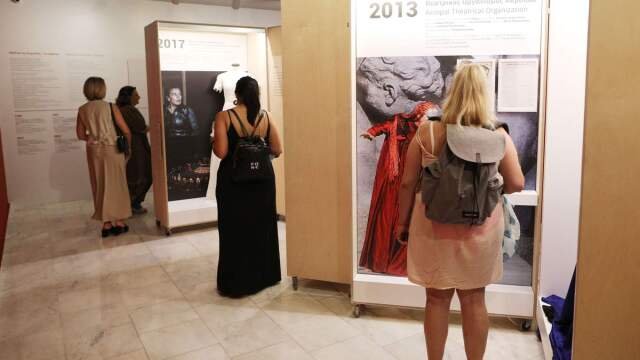On the occasion of the 70th anniversary of the tragedy Hippolytus of Euripides in Ancient Theater of Epidaurusthe Epidaurus Exhibition Center this year hosts an exhibition dedicated to the tragic figures of Hippolytus and Phaedra.
The report is titled “Hippolytus-Phaedra” and offers a fascinating look back at the performances of individual tragedies in the Ancient Theater of Epidaurus from the 1950s to the present day.
The concept and general management of the project is the Artistic Director of the Athens Epidaurus Festival, Katerina Evagelatos. The scientific manager is Panagiotis Michalopoulos, Assistant Professor at the Department of Theater Studies, EKPA.
Konstantina Nikolopoulou, Theatrologist, is responsible for research and documentation. The design and curation of the exhibition was done by Thalia Melissa and Giorgos Rymenidis.
The exhibition “Hippolytus-Phaedra” was realized within the framework of the Athens Epidaurus Festival and the International Network of Ancient Drama, with the invaluable support of the Ministry of Culture.
The performances of Hippolytus and Phaedra
The presentation of Euripides’ Hippolytus at the National Theater of Epidaurus directed by Dimitris Rodiris in 1954 provided the starting point for the official establishment of the Epidaurians a year later. Since then, seven more performances of Hippolytos have followed in the Argolic theater and one in Rakina’s Phaedra.
The Athens Epidaurus Festival, with the valuable support of the Ministry of Culture, honors this important legacy of nine major performances with the periodical exhibition “Hippolytus-Phaedra”, where valuable documents from the archives of the Festival and the National Theater as well as others. cultural organizations and troupes are presented, such as costumes, masks, models, scores and audiovisual material.
The exhibition is open to the public from July 5 to August 24, 18:00-01:00, on the days of the performances in the Ancient Theater of Epidaurus, as part of the Athens Epidaurus Festival (Friday and Saturday). Entry is free.
Hippolytus and Phaedra
The exhibition “Hippolytus and Phaedra” is based on eight performances of Euripides’ ancient drama Hippolytus and one performance of Rakina’s Phaedra in the Ancient Theater of Epidaurus.
According to legend, Phaedra, wife of King Theseus and a pawn in the revenge plan of the goddess Aphrodite, fell in love with Hippolytus, son of her husband and the Amazon Hippolytus. Devoted to the worship of the goddess Artemis, Hippolytus rejects Phaedra’s love, with disastrous consequences.
As Panagiotis Michalopoulos, Assistant Professor of the Department of Theater Studies of the Greek Academy of Sciences and scientific manager of the exhibition, points out, “Hippolytus and Phaedra, ancestor and stepmother, blasphemous chastity and unholy love, and finally Artemis and Aphrodite – these contrasts weave the net of a tragedy that unfolds the very existence of man: in the hidden which is deep in the soul and at the same time. to the point where chaos threatens the fragile order of civilization and the world.”
The Exhibition Hall of Ancient Epidaurus
The Exhibition Space of Ancient Epidaurus reopened in 2023 after many years of closure. At the initiative of the Artistic Director of the Athens Epidaurus Festival, Katerina Evagelatos, the reopening of the space was inaugurated with the exhibition “Medea in Epidaurus”, an exhibition dedicated to the performances of the tragedy Medea presented in Ancient Theater of Epidaurus from the 1950s to the present.
At the opening of the exhibition space that took place on July 7, 2023, the President of the Board of Directors of the Athens Epidaurus Festival, Dimitris Passas, pointed out: “We provide a different destination in a building of significant architectural value and therefore Epidauria acquires a museum presence and perspective. The Festival took over within a short time and made it work that adds to the experience of visitors to the Ancient Theater. Special thanks to the Ministry of Culture for its support.”
It is worth mentioning that the building was designed by the famous architect Aris Konstantinidis.

